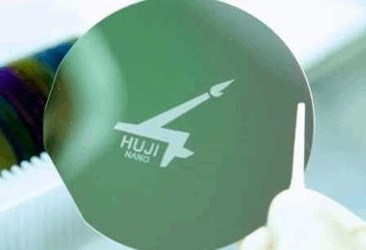Researchers Build Tiny Yet Ultra-Precise Environmental Sensor
By Jof Enriquez,
Follow me on Twitter @jofenriq

Researchers at the Hebrew University of Jerusalem's Center for Nanoscience and Nanotechnology have successfully fabricated an on-chip sensor so sensitive that it can measure unprecedentedly minute variations in temperature and other environmental parameters.
Nanophotonics and nanoplasmonics resonance cavities are widely used to detect changes in the environment, but their accuracy remains limited by environmental fluctuations imprinted on the measured signal, and the lack of miniaturized, scalable robust and precise methods of measuring optical frequencies directly. In addition, miniaturizing and fabricating resonance cavities – even state-of-the-art chip-scale microring and microdisk resonators (MRRs) – still present a major challenge to engineers.
However, "by utilizing a frequency-locked loop combined with a reference resonator, we overcome these limitations and convert the measured signal from the optical domain to the radio-frequency domain. By doing so, we realize a highly precise on-chip sensing device with sensing precision approaching 10−810−8 in effective refractive index units, and 90 μK in temperature. Such an approach paves the way for single particle detection and high-precision chip-scale thermometry," wrote the Hebrew University research team in its study, Ultra-precise optical to radio frequency based chip-scale refractive index and temperature sensor, published in the journal Optica.
Their tiny, on-chip sensor has a novel set-up consisting of two cascaded microring resonators, with one serving as the sensing device and the other playing the role of a reference (uniquely integrated at the chip scale) – thus eliminating environmental and system fluctuations such as temperature and laser frequency. The fabrication technique, along with the servo-loop locking scheme, allow the sensor to detect unprecedentedly small frequency changes at the nanoscale using well-established RF technologies, such as frequency counters, spectrum analyzers, and atomic standards.
The device can be easily "integrated with standard CMOS [complementary metal–oxide–semiconductor] technology, paving the way for even more exciting measurements such as single particle detection and high precision chip scale thermometry," said Prof. Uriel Levy, Director of the Harvey M. Krueger Family Center for Nanoscience and Nanotechnology at the Hebrew University of Jerusalem, and a faculty member at the Department of Applied Physics in the Rachel and Selim Benin School of Computer Science and Engineering, in a news release.
Beyond utilization as highly-sensitive environmental monitors, these chip-scale sensors have wider application potential. For example, such sensors could be used in health monitoring or diagnostics by detecting trace molecules in a single breath.
